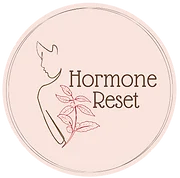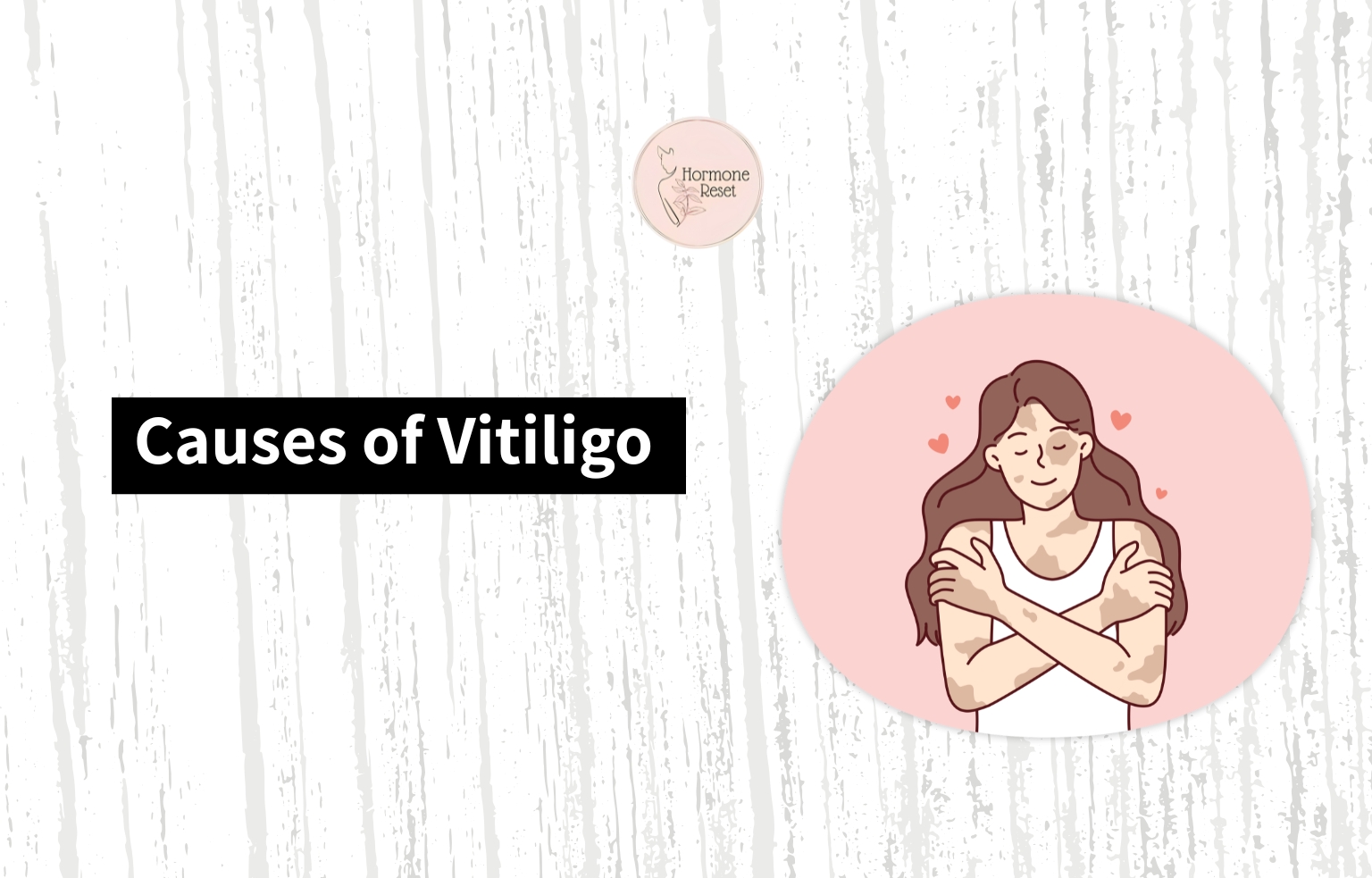Vitiligo is far more than a cosmetic skin issue—it’s a visible clue to deeper imbalances in the body. While the loss of skin pigment is the hallmark, the real story unfolds at the intersection of genetics, immunity, environment, and hormones. Let’s explore the science behind vitiligo’s causes, the latest research, and how the Hormone Reset Functional Medicine Approach offers a new path to healing.
Autoimmune Dysregulation: When the Body Turns on Itself
The primary cause of vitiligo is autoimmune dysfunction. Here, the immune system mistakenly attacks melanocytes—the cells responsible for producing skin pigment—leading to well-defined white patches on the skin. This immune attack is not random; it’s driven by a complex interplay of immune cells, especially IFN–γ–producing CD8+ T cells, which target and destroy melanocytes. Research shows that regulatory T cells, which normally keep immune responses in check, are often impaired in vitiligo, allowing the destructive process to continue unchecked.
Melanocytes themselves aren’t just passive victims. Studies reveal that melanocytes in vitiligo patients show signs of stress and abnormality, making them more susceptible to immune attack. Environmental stressors, like chemicals or UV exposure, can increase this vulnerability by causing melanocytes to release signals that attract immune cells.
Genetic Susceptibility: The Inherited Risk
Genetics play a significant role in determining who develops vitiligo. Nearly 30–60 risk alleles have been linked to the disease, most of which are involved in immune system regulation. Notably, variations in HLA genes and other immune-related genes such as PTPN22 and IL-2RA have been associated with increased risk. These genetic factors often overlap with those seen in other autoimmune diseases, explaining why vitiligo frequently co-occurs with conditions like thyroid disease or type 1 diabetes.
Recent breakthroughs have uncovered that certain genetic variants, such as those mimicking the effects of PCSK9-inhibiting drugs, are associated with a lower risk of developing vitiligo. This suggests that immune-metabolic pathways, not just traditional immune mechanisms, may influence who gets vitiligo and how severe it becomes.
Environmental and Physical Triggers: The Spark That Ignites the Fire
While genetics set the stage, environmental and physical triggers often pull the curtain. Common triggers include:
- Skin trauma (cuts, burns, or repeated friction)
- Severe sunburns
- Exposure to chemicals (like phenols found in certain dyes and cosmetics)
- Emotional or psychological stress
These factors can initiate or worsen vitiligo by increasing melanocyte stress and activating immune responses. For example, exposure to phenolic compounds can disrupt melanin production, causing melanocytes to send distress signals that trigger inflammation and immune attack.
Hormonal Influences: The Hidden Modulator
Hormonal changes are a critical but often overlooked factor in vitiligo. Life stages involving major hormonal shifts—such as puberty, pregnancy, or menopause—can trigger or exacerbate the condition. Hormones influence immune system behavior and skin cell health, so imbalances may tip the scales toward pigment loss. Stress hormones, in particular, have been shown in animal models to worsen vitiligo by altering immune cell activity4.
The Microbiome and Vitiligo: A New Frontier
Emerging research highlights the gut-skin connection in autoimmune diseases. Recent studies show that compounds derived from gut-friendly bacteria can slow vitiligo progression and even help restore pigmentation. This suggests that gut health and the microbiome may play a vital role in immune regulation and skin health.
Why Conventional Treatments Often Miss the Mark
Traditional therapies—like topical steroids, light therapy, or new drugs such as JAK inhibitors—focus on managing symptoms or slowing progression. While these can help, they rarely address the underlying triggers: immune imbalance, genetic risk, environmental exposures, and hormonal disruption. This is why relapses are common and long-term remission remains elusive for many patients.
Hormone Reset’s Functional Medicine Approach: Healing from the Inside Out
Hormone Reset offers a revolutionary approach by looking at the whole person, not just the skin. Here’s how this method stands apart:
- Root Cause Analysis: Instead of masking symptoms, Hormone Reset investigates your genetics, immune status, hormone levels, gut health, and environmental exposures to pinpoint the real drivers of vitiligo.
- Hormonal Balance: Personalized plans are developed to restore hormonal harmony, which helps calm the immune system and protect melanocytes.
- Immune Modulation: Through targeted nutrition, lifestyle changes, and stress management, Hormone Reset helps rebalance immune responses and reduce inflammation.
- Gut Health Restoration: By improving gut health and supporting a healthy microbiome, this approach addresses a key source of immune dysregulation, potentially slowing or reversing vitiligo progression.
- Empowerment and Education: Patients are given the tools and knowledge to actively participate in their healing journey, increasing the likelihood of lasting results.
Compelling Conclusion: A New Era for Vitiligo Care
Vitiligo is a complex condition, but understanding its true causes opens the door to real healing. Genetics, immune dysfunction, environmental triggers, and hormonal imbalances all play a part—but they’re not the end of the story. The Hormone Reset approach goes beyond surface treatments, offering hope by addressing the root causes and supporting the body’s natural ability to heal.
If you’re ready to move past frustration and discover a science-backed, holistic path to vibrant skin health, Hormone Reset is here to guide you. Your journey to restoration starts from within—let’s reset, rebalance, and reclaim your confidence together.
Also Read Natural Remedies for Vitiligo
References
- https://www.ncbi.nlm.nih.gov/books/NBK559149/
- https://news.northwestern.edu/stories/2025/01/microbial-therapy-offers-new-hope-for-vitiligo-patients/
- https://my.clevelandclinic.org/health/diseases/12419-vitiligo
- https://pmc.ncbi.nlm.nih.gov/articles/PMC11735104/
- https://www.dermatologytimes.com/view/genetics-suggest-new-vitiligo-treatment-path
- https://www.pfizer.com/disease-and-conditions/vitiligo
- https://www.aadmeetingnews.org/2025-aad-annual-meeting/article/22935059/vitiligo-treatments-myths-and-concerns
- https://vajiramandravi.com/current-affairs/vitiligo/


Leave a Reply